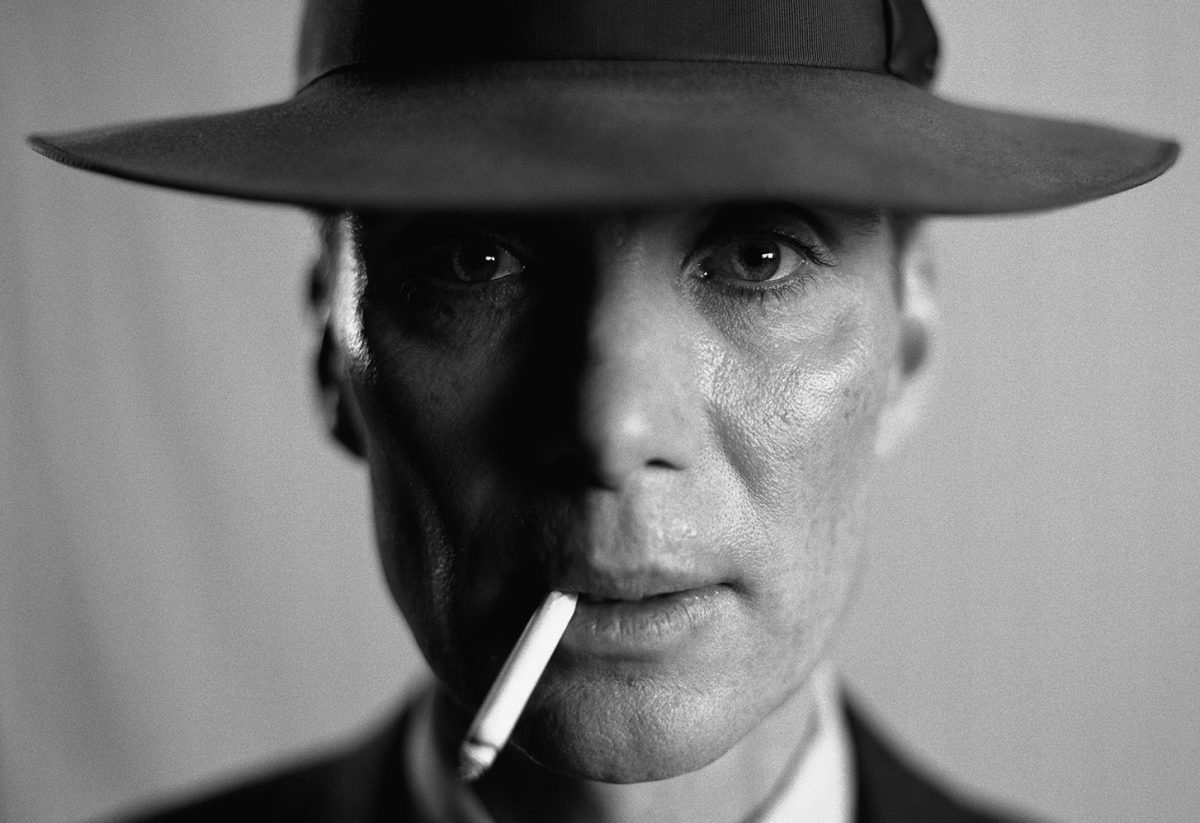From a filmmaking standpoint, “Oppenheimer” is one of the best films of the decade and a stunning return to form for Christopher Nolan after the baffling anticlimax of “Tenet” in 2020. Politically, however, it is by far his most controversial film, often trading historical accuracy for narrative exigency, sidestepping key ethical concerns at the heart of the movie’s production.
The movie’s plot will be at least passingly familiar to anyone who paid attention in history class: The U.S. military recruits a bright young theorist in the newborn field of quantum mechanics for a top-secret project, in spite of his Communist connections. As Cillian Murphy’s J. Robert Oppenheimer leads the Manhattan Project to success in Los Alamos, he is haunted by his choices to have two affairs, engage with leftist activism and, ultimately, create the atomic bomb.
Lewis Strauss, played by the irrepressible Robert Downey Jr., embodies the bureaucratic forces hellbent on destroying Oppenheimer’s public image after the war, but his wife and scientific colleagues intervene at the last minute to salvage what remains of his reputation. In the end, the last victim of the atomic bomb is Oppenheimer himself. In close-up after claustrophobic close-up, his hollow, shell-shocked eyes gaze at ghosts that the audience cannot see: the ghosts of his bombs’ victims, and the phantoms of a future war that will end all wars.
“Oppenheimer” waded into the seas of controversy from its very first trailer, and it should be no surprise that critics are circling it now — not in spite of its box office success, but because of it. The necessity of the Allied bombings of Nagasaki and Hiroshima is still hotly debated, and Nolan’s decision to focus entirely on how they affected Oppenheimer himself, instead of on the horrors Japanese people experienced, has only added to the controversy.
After all, “Oppenheimer” is a film most sympathetic to its eponymous protagonist, ending with his political enemies frustrated, his dire warning about the risks of nuclear proliferation ringing true across the decades, and his integrity in the mind of the audience intact. Furthermore, Oppenheimer never apologized for creating the bomb, and his track record of regret for causing the deaths of hundreds of thousands of civilians is mixed at best. The film gives him the benefit of the doubt, purporting to depict his inner turmoil that never entered the annals of history.
The easy answer to the critics, of course, is that “Oppenheimer” is a dramatized biopic, not a geopolitical documentary — leave the facts to the historians. Then, they might broaden their criticism of the film: Why make “Oppenheimer” at all? Was there truly a need for another profile of a famous white guy, who killed hundreds of thousands, no less, made by a famous white guy? There may not be a version of “Oppenheimer” that isn’t flawed from its inception, but there is still value to be found in interrogating Nolan’s final product, instead of imagining a world where it never existed at all.
The story of the production of “Oppenheimer” is littered with interesting filmmaking tidbits. For example, Nolan helped invent black and white 65mm film just for this movie, and he claims that there are no CGI shots in the film, including the Trinity test scene. Likewise, Murphy had to lose an undisclosed amount of weight to accurately portray the gaunt Oppenheimer.
The culmination of all these directorial quirks, the sum total of Nolan’s perfectionist style, is a film that moves like a well-oiled machine. The twin narratives of the plot, though separated by years and cut up into interlocking scenes, still fit together seamlessly, pulling the viewer through a dizzying story that Nolan lays wide open for them.
The sound design is punchy, deafening and awe-inspiring in its scope and towering resonance. The acting is haunting when it needs to be, sweeping and grand when history is in the making and always riveting. Nolan exploits every precious millimeter of IMAX film, producing color footage bursting with rich color and tack-sharp detail, and black-and-white footage that dances on the razor edge between brilliant light and deepest shadows, exulting in every shade of gray between.
For all its strengths, “Oppenheimer” is not without flaws. The beginning of the movie is abrupt and rushed, almost amateurishly so. The very first frames show close-ups of the atomic bomb’s awesome power, juxtaposed with the first of many close-ups of Oppenheimer’s face, almost as if to reassure the audience that they are in the right movie theater — Nolan seemingly wanted to make sure nobody could mistake the opening moments of his film for the showing of “Barbie” next door.
The film’s treatment of female characters as emotional obstacles in Oppenheimer’s way leaves a lot to be desired. Their places in the narrative feel tacked on as an afterthought, and the talents of Emily Blunt and Florence Pugh are squandered in their narrow, stereotypical roles.
“Oppenheimer,” set as it is in the past, seems almost inevitable. Even though chance meetings and momentary inspirations sustain the plot when necessary, there can be no true surprises for us in the audience. When Oppenheimer is told about the chance that the Trinity test could set off a world-ending nuclear conflagration, the horror in his eyes cannot truly touch us through the screen. We know that after the dust settled and the echoes faded on that day in 1945, the first nuclear bomb did not set fire to the sky.
Through Nolan’s retelling of history, Oppenheimer is an American Prometheus, bringing atomic fire down from Olympus to the mortal realm. Instead of warming themselves around that fire, though, humanity unleashes it on themselves, incinerating their enemies with a force they don’t fully understand. Oppenheimer alone understands the nature of fire — and he alone must suffer, seeing by that fire’s light a future up in flames, chained for a lifetime to an Earth he has all but doomed and could not save.























